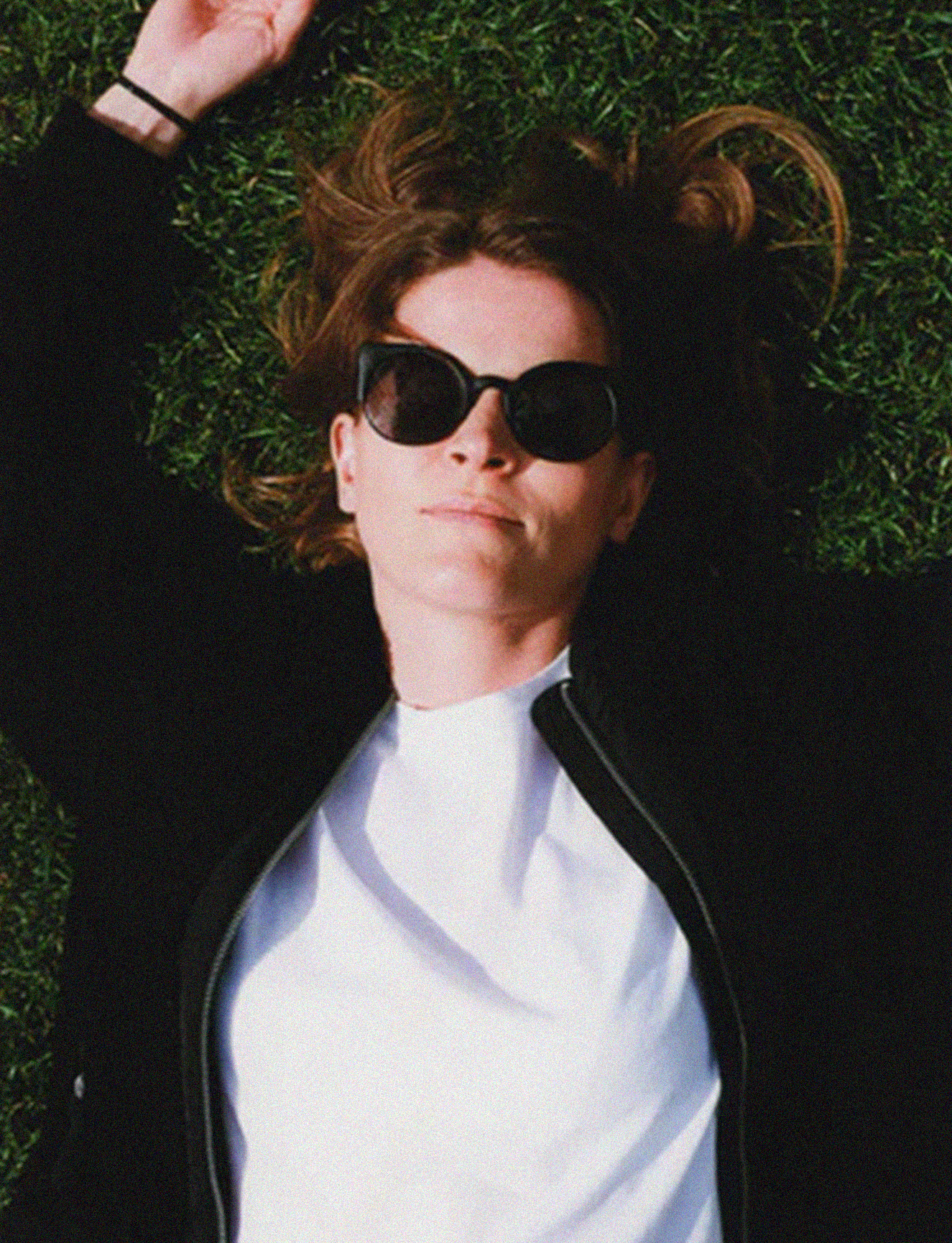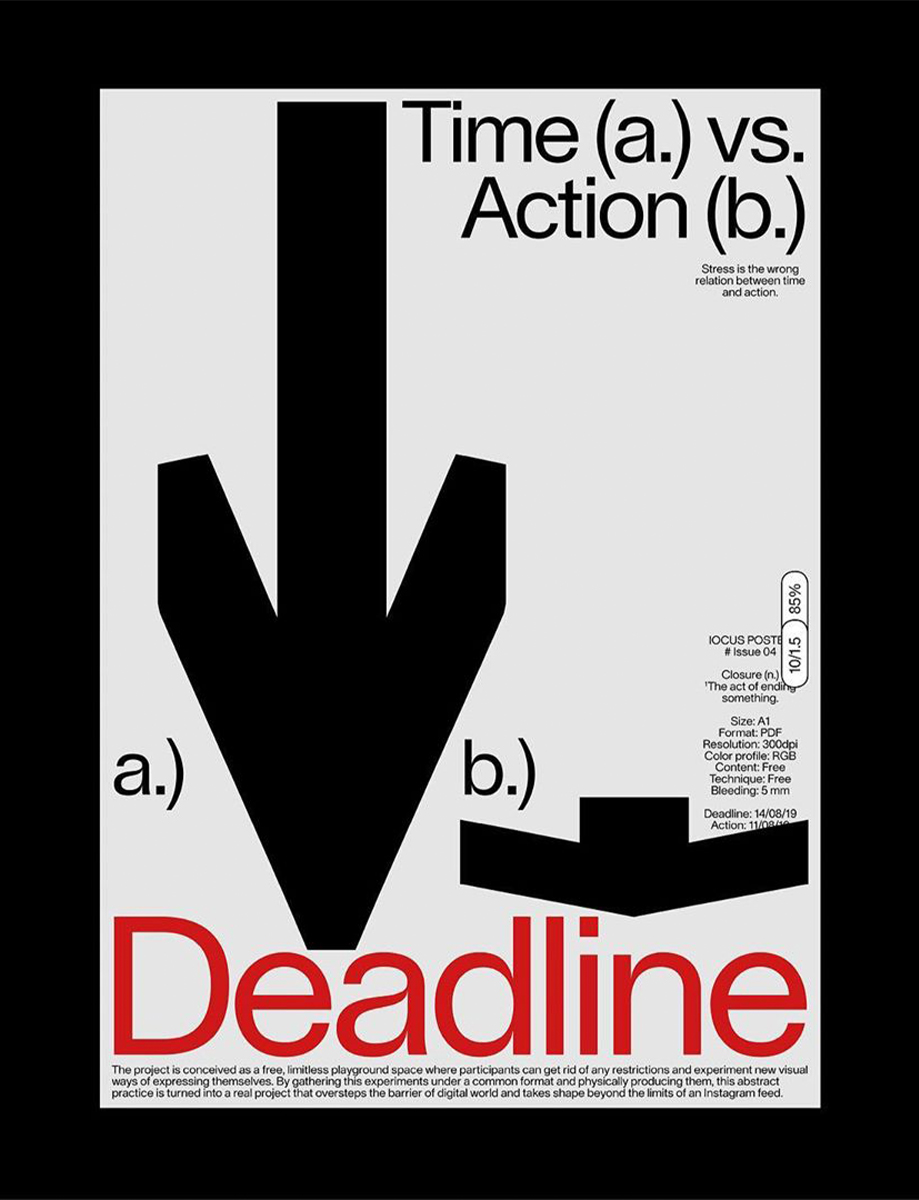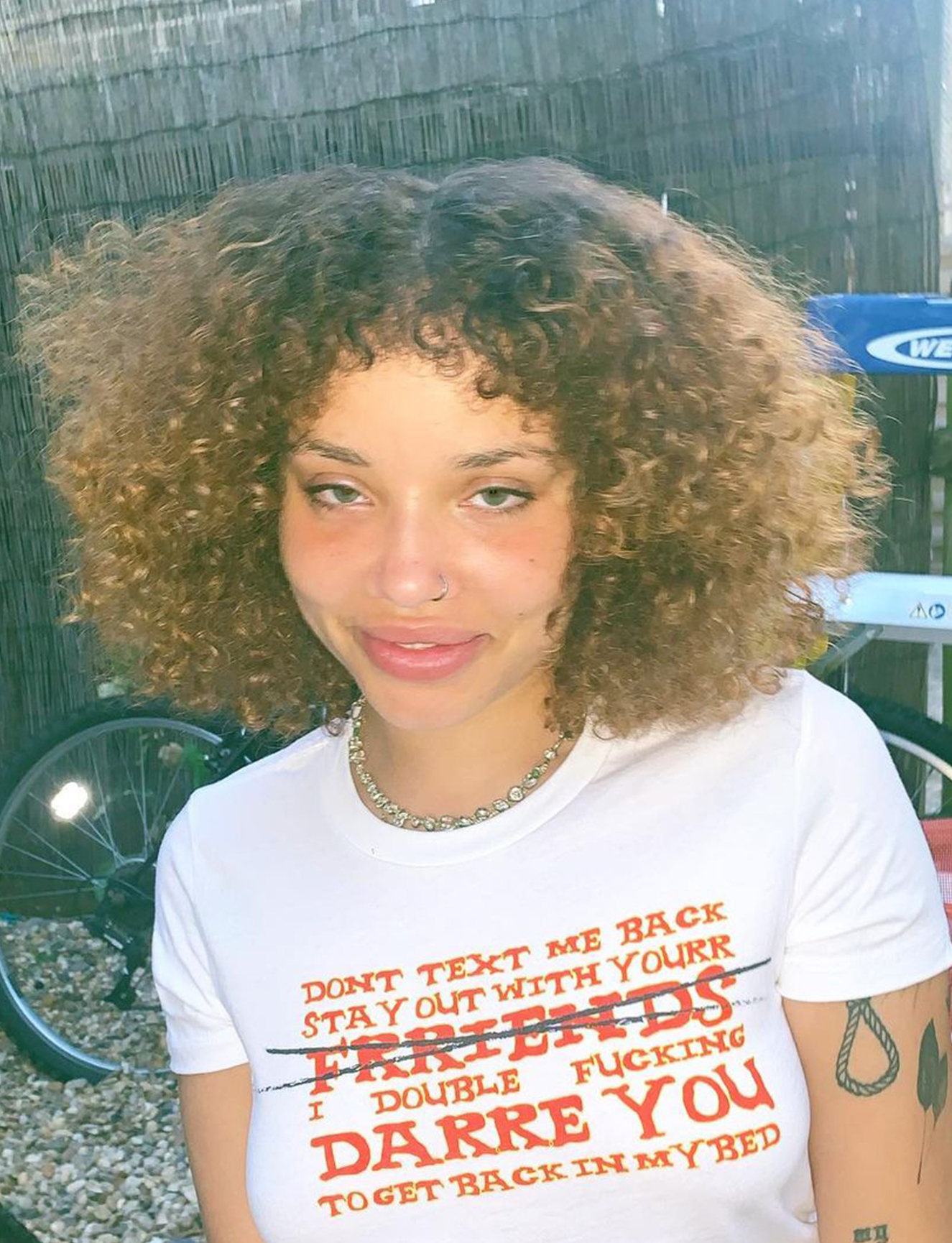You’re Finnish originally, but now based in Holland. Did you move from Finland to Holland to study?
I was around 22 when I first came to Holland. I had just wanted to travel pretty much, and I didn’t really know where to start, but I had a friend staying in Holland at the time so I came here to visit them. I ended up getting a job here and then met a guy, so I stayed here. Initially I had planned to return to Finland to start studying, but for a time I couldn’t really work out what it was I wanted to do. So I ended up just staying here and working, and eventually I found my passion that way.
How did you discover art and printmaking?
In Amsterdam I met a lot of artists, and in a different way than in my hometown. All the parties I went to, there were artists from different fields – musicians, photographers, visual artists – so that really influenced me. Also, the city itself is really artistic. There are lots of museums, you see graffiti everywhere, there’s just so much art here and plenty of culture.
When I was in Holland I started properly drawing for the first time. Of course I had drawn as a kid, but I thought I was not that good at it. I hadn’t kept it up as a hobby until I felt pushed over here, because I felt inspired by my surroundings. So I started sketching, and I felt like I was getting better and better, and I kind of reached the limit of what I could do on my own. I felt like I needed a little bit of guidance, so I went back to Finland for a year to study at art school there.

Then I returned to Holland and worked in different customer service jobs for a long time, and at a certain point I thought, “What would it look like to be an artist full-time? What would I even make?” That’s when I found printmaking.
I had done some already at art school, but it wasn’t really my favourite subject then, I just wasn’t that interested. But then I discovered linocuts on my own here in Holland and something just really clicked.
Why do you think it didn’t click initially?
I think because with printmaking, I didn’t really even know what it was when I started art school. I went there to paint and draw, and to sculpt; drawing and painting were very interesting to me. So those were the subjects that I was really interested in and wanted to pursue. I didn’t know there was this whole world of printmaking.
I’ve always enjoyed making things with my hands
Also, we did a lot of intaglio at school and there was only one short period of woodcut printing, and no linocuts at all. I didn’t really like the technicality of intaglio, it’s quite different to linocuts or wood cuts. When I discovered linocuts the process just felt simple, and I enjoy that there are many steps to it, that it’s not just as simple as drawing or painting something on a canvas or paper but there is this technical aspect to it as well.
What is it that makes you appreciate steps to a process over something that’s perhaps more immediate, like painting or drawing?
I’ve always enjoyed making things with my hands. I like knitting, for example, or sewing or woodwork. I like doing things with my hands in general, not just in terms of one specific thing. So in printmaking, I can combine different elements like carving, or printing, those are very hands on. And you also get to experiment a lot. I would say most of the time that it’s about troubleshooting and problem solving, especially in the beginning. So it’s really multidisciplinary.
I’m interested in the fact that Amsterdam was where you discovered organically how to be an artist, but then you formalised that by studying in Finland. How do you think both these places shaped you as a creative person?
Both places are very important, and I think that they came at the right time in my life. When I was in Holland and started getting influenced by all these artists, I think I was in a place where I was searching for myself. I realised that I had always enjoyed art, and especially street art, and over here for the first time I saw people being so free with what they were creating, and surrounding themselves in this way of life. I really submerged myself in the culture in Holland.
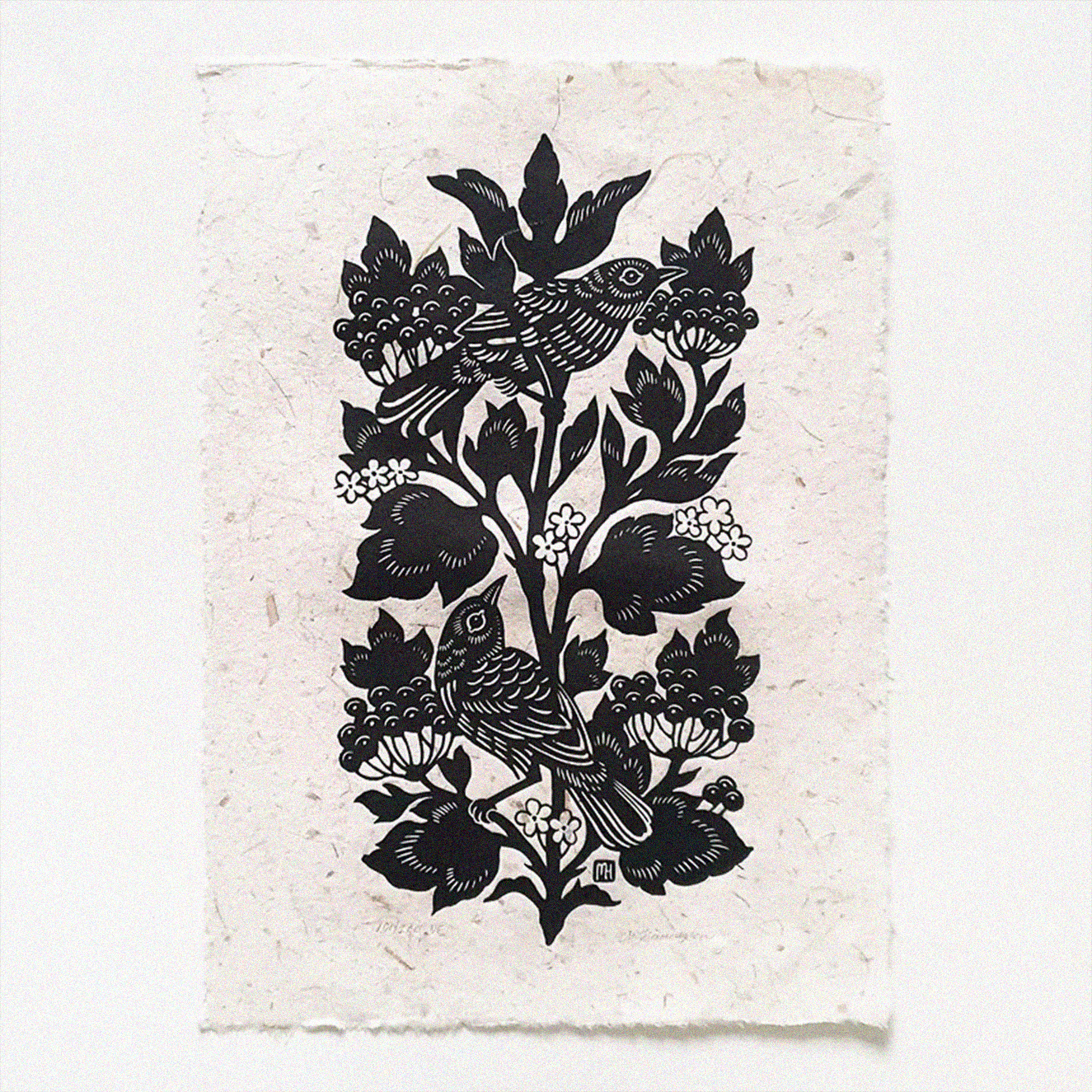
Art school was another place where I got to be around like-minded people who were surrounding themselves with art. I got a lot of technical knowledge that improved my skills, and that was certainly something that I don’t think I necessarily could have done otherwise. Or maybe I could have, but it would have taken me a lot longer to learn all that by myself. Sometimes it’s really important to have a teacher to point out certain things to you that you could not have seen for yourself.
How did you know you’d arrived at your style as an artist?
I went on quite a conscious search, initially. I really wanted to develop my thing. But I think with style, maybe it comes when you start really appreciating what you are actually into and what influences you. For me, I really love folk art, and traditional styles, and I think that’s really visible in my work, but it’s also something that I wasn’t really confident with at first. I think I was worried, “Who would be interested in folk art?” because it’s supposed to be in the past. We have all these new art styles that constantly keep coming, and this isn’t particularly contemporary. I felt back then that contemporary art was the right way to make art.
When I started actually listening to what I wanted to make, I started enjoying my work more and loving it more. I also got a lot of good feedback from other people, and of course that’s validating. The point at which I started really looking for my style, I was also active on social media, so I had this instant feedback that I got. It was a big part of gaining confidence in my work.
Do you think social media, then, has shaped you as an artist?
I think so, yes. I mean I started making art more actively because I wanted to post more and reach people and become a professional artist. When I left my job, this was a very conscious decision: I want to become a professional artist. I researched it, “What do I have to do to become a professional artist?” I felt uncomfortable when I started suddenly posting my work, but I still remember posting the first time and getting good feedback for it. I thought, “Okay, well, maybe this is the right path.”
I really wanted to develop my thing
Is social media still as important as it once was?
It is still important, at least for me it is still my main source of traffic to my website. But they really have made it hard for artists to get seen, especially for new artists to have their accounts seen. It’s really difficult. I think I was lucky in that sense, that I was there quite early on, and that I was able to grow my following before they started changing the algorithm.
I don’t think a big following is necessarily a sign that your art is good or valid. Because it all depends on what you’re trying to do, and what you want to accomplish. For me, personally, I want to support myself through my art, and to enjoy what I do. At the moment social media allows me to achieve that.
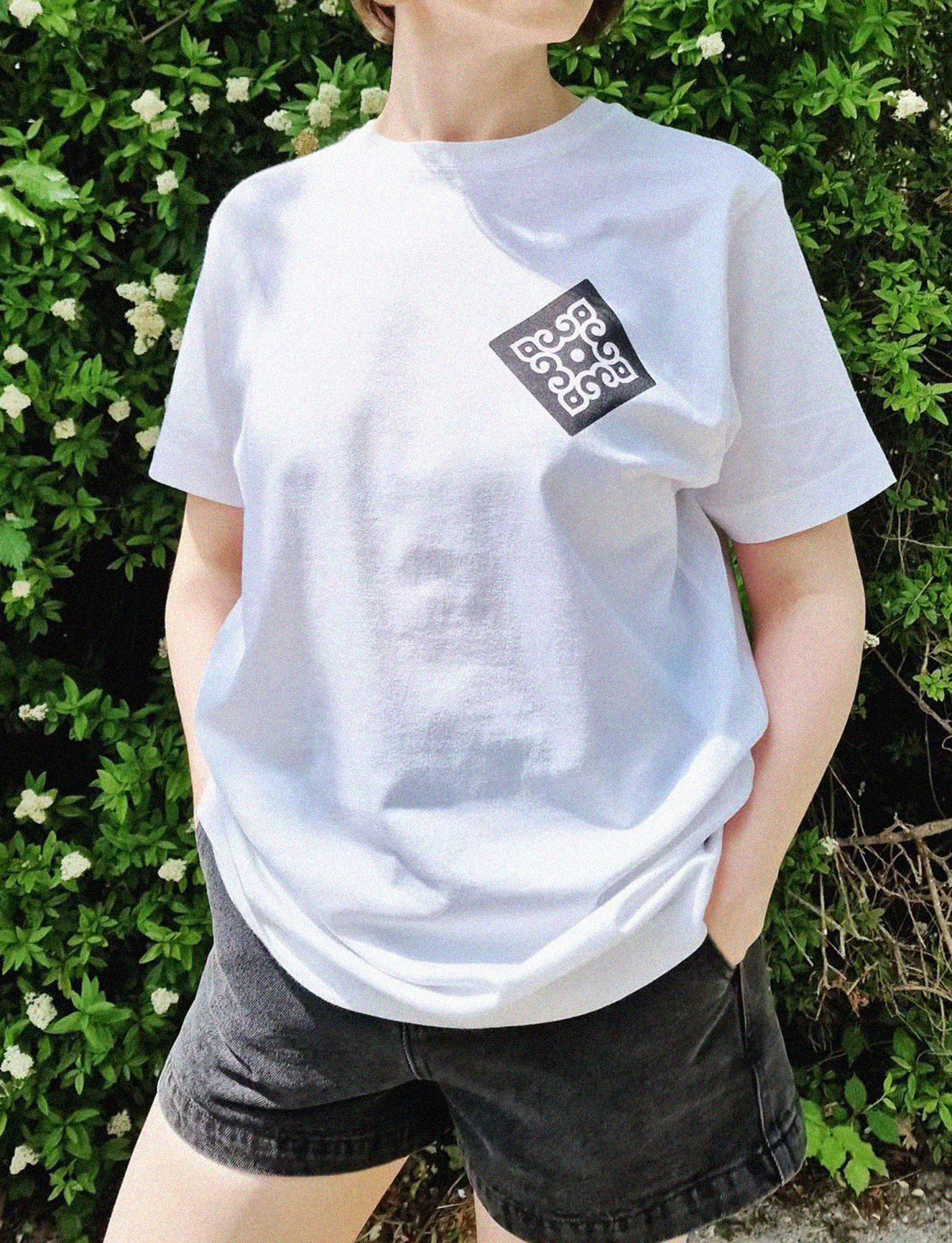
When did you realise you arrived as a professional artist?
I mean, if we talk about professional artists, I think that to be a professional anything it’s when you actually can live off what you do. To be a professional artist, for me, was probably when I was able to pay my bills with my work. But to be an artist, I also remember how hard it was to start calling myself an artist. I heard it said somewhere that you don’t need anyone’s permission to call yourself an artist. So then, I would say that it’s one thing to be an artist and another thing to be in a professional world of art.
Do you feel possessive of your ideas as an artist? And with social media particularly, do you ever feel ‘copied’?
I do see my work being straight up copied from time to time. At first it was exciting, and then you get to a certain point and you start feeling ripped off. But also I see a lot of artists being inspired by my work, and many people have told me that I’ve inspired them. So I’ve thought a lot about the line between copying and being inspired.
There’s a saying I like though: a rising tide lifts all boats. Being copied directly, I don’t like that at all, and I don’t accept that. But being inspired, if somebody is inspired by my work, then it means I have done something that has touched people.
Read More: Neighbourhoods With Alina Derya Yakaboylu



